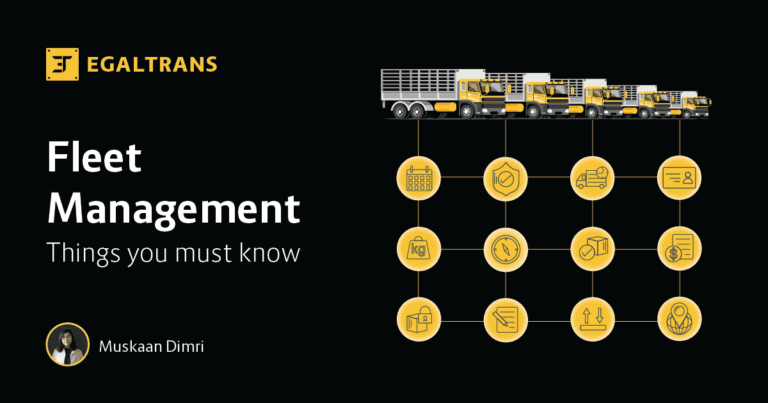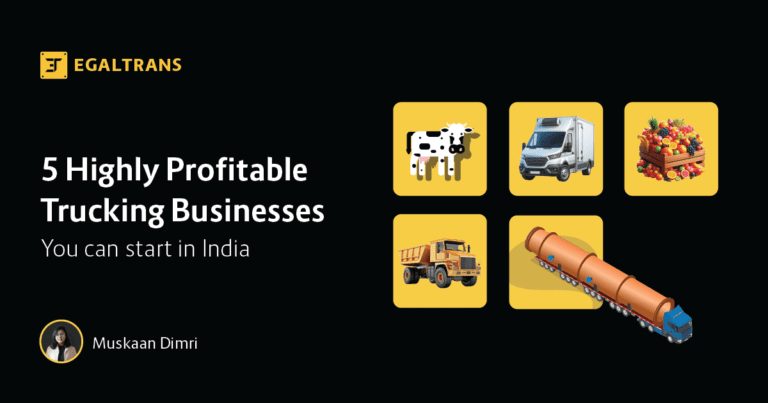The trucking industry is a backbone of any economy, responsible for transporting goods and materials across vast distances. However, the relationship between truck owners and drivers can be fraught with tension and disagreements. These conflicts, if left unresolved, can severely hinder fleet growth and efficiency. This blog delves into the five significant conflicts between truck owners and drivers that restrict fleet growth, explores the underlying factors, and offers actionable solutions to bridge the trust gap.
The Blame Game Between Trucks Owners and Drivers
The trucking business is often marked by a continuous blame game between owners and drivers. Owners frequently accuse drivers of irresponsible driving, poor vehicle maintenance, and low fuel efficiency. On the other hand, drivers often blame owners for not providing well-maintained trucks, insufficient wages, or demanding unreasonable delivery schedules.
- Drivers’ Perspective: Drivers believe that owners do not appreciate their efforts or the difficulties they face on the road, such as harsh weather, bad road conditions, and long hours.
- Owners’ Perspective: Owners argue that drivers fail to take ownership of their responsibilities and often neglect vehicle upkeep, leading to increased maintenance costs and downtime.
This back-and-forth blame game creates a hostile work environment and deteriorates trust, making it challenging to retain skilled drivers and maintain a healthy fleet.
The Controllable & Uncontrollable Factors Causing Fights
The conflicts between truck owners and drivers can generally be categorized into controllable and uncontrollable factors:
– Controllable Factors:
- Maintenance and Upkeep: Disagreements about who is responsible for truck maintenance can be a significant source of conflict. Owners may believe it is the driver’s responsibility to report and manage minor issues, while drivers may feel the owners should provide regular maintenance checks.
- Compensation and Benefits: Drivers often feel under-compensated for the work they do. If there isn’t a transparent and fair compensation model, it leads to dissatisfaction and disputes.
- Job Conditions and Safety: Poor working conditions, such as lack of proper rest stops or unsafe trucks, can lead to arguments. Drivers may blame owners for ignoring their safety, while owners may believe drivers are exaggerating or neglecting their duties.
– Uncontrollable Factors
- Traffic and Road Conditions: Drivers often face challenging road conditions, traffic congestion, or unexpected weather changes. Owners, however, may not consider these challenges when setting delivery schedules or measuring driver performance.
- Market Fluctuations: Changes in fuel prices, freight demand, or economic conditions can affect profit margins. Owners might push these stresses onto drivers through unrealistic expectations or wage reductions, causing friction.
What Should They Do to Close the Trust Gap?
Closing the trust gap between truck owners and drivers requires a concerted effort to understand each other’s perspectives, address grievances, and build a more collaborative working environment. Here are some actionable steps:
– Open Communication Channels: Establishing regular meetings or communication platforms where both parties can voice concerns, share feedback, and suggest improvements can significantly reduce misunderstandings.
– Clear Roles and Responsibilities: Clearly define the roles and responsibilities of both parties. For example, outline who is responsible for routine maintenance and who covers unexpected repairs. This clarity can prevent many arguments related to vehicle upkeep.
– Fair Compensation and Incentives: Develop a transparent and fair compensation system that rewards drivers based on performance metrics like fuel efficiency, safety, and delivery timeliness. Consider offering incentives for drivers who exceed performance expectations.
– Invest in Training and Development: Regular training sessions for drivers on road safety, vehicle maintenance, and fuel efficiency can empower them to take better care of the vehicles. Simultaneously, owners can benefit from training on empathy, negotiation, and conflict resolution.
– Introduce Telematics and Digital Solutions: Implementing telematics systems can help both parties track vehicle performance, driving behavior, and maintenance needs in real time. This transparency can reduce accusations and help identify the root causes of issues more effectively.
The conflicts between truck owners and drivers often stem from misunderstandings, misaligned expectations, and a lack of trust. Addressing both the controllable and uncontrollable factors that fuel these fights is crucial to ensuring fleet growth and sustainability. By fostering open communication, providing fair compensation, investing in training, and leveraging technology, both parties can close the trust gap and work towards a more productive and harmonious relationship. After all, a united team of owners and drivers is key to a successful and growing fleet operation.






